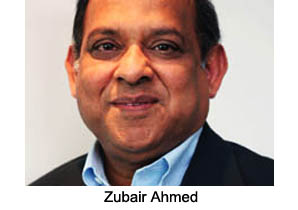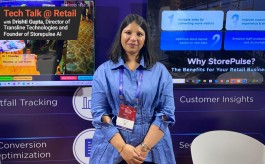Home » Viewpoints » By 2014-end, we will reach 1 mn outlets: Zubair Ahmed
By 2014-end, we will reach 1 mn outlets: Zubair Ahmed
By Dinesh Jain | February 06, 2014
Interview with Managing director, GSK Consumer Healthcare
 GSK Consumer Healthcare's sales grew 18 per cent for the quarter ended December, led by a 13 per cent growth in volumes. Profit rose 15 per cent for the quarter as GSK cut costs in a challenging environment. Managing director Zubair Ahmed tells Viveat Susan Pinto how the company managed to increase volume growth. Edited excerpts:
GSK Consumer Healthcare's sales grew 18 per cent for the quarter ended December, led by a 13 per cent growth in volumes. Profit rose 15 per cent for the quarter as GSK cut costs in a challenging environment. Managing director Zubair Ahmed tells Viveat Susan Pinto how the company managed to increase volume growth. Edited excerpts:Quarterly volume growth was higher than the nine-12 per cent GSK has seen usually. What's the secret?
Our endeavour at all times has been to be relevant. We do not want to be gimmicky with our products. For instance, our fastest growing stock-keeping unit in the Horlicks (malted milk drink) portfolio is Women's Horlicks. It grew at 40-50 per cent during the December quarter. There are other variants, too, in the portfolio that are doing well, such as Chocolate Horlicks and Mother's Horlicks. Our products are based on hard science and we try and make these relevant to consumers. This, I think, helps us set ourselves apart from other players helping us grow our business.
How much does Horlicks contribute to the revenue? And, how well is the Rs 5 18-g Horlicks pack doing?
Horlicks contributes 60-65 per cent to the revenue, Boost 15-20 per cent and the balance comes from Viva, Maltova and allied products such as biscuits and oats. Products such as Crocin (painkiller tablet), Iodex (pain balm) and Sensodyne (toothpaste) are not part of the listed entity. They are 100 per cent owned by GSK Asia-Pacific. The 18-g pack, launched a few years ago, has helped us gain entry into smaller towns and cities and improve reach in old markets. In that sense, it is an important price point for us. Currently, we pretty much straddle the price range from Rs 5 to Rs 655 for a two-kilogramme Horlicks pack. In effect, we take care of varying consumer needs.
Will you look at more extensions in food under Horlicks? Has Foodles instant noodle been phased out completely?
We have not killed Foodles. It is available in the south and in the CSD (canteen store departments) channel. There is not much science attached with Foodles, which is why it is not getting an aggressive push. Once we have been able to put science behind it, we will give it the necessary push. In other food categories, we are working on new concepts. Under Horlicks, we already have biscuits and oats. We are working on more extensions. Both Horlicks and Boost can be stretched, because the platforms on which they rest permit us to do it. Horlicks is positioned on the platform of nutrition and Boost on the platform of energy. You will see the launch of new concepts around these platforms as we go forward.
How much do villages contribute to your sales?
Rural areas contribute eight per cent to the top line. In about five years, we see this contribution going up to 25 per cent. Besides cheaper products, we have also improved distribution in rural areas. Currently, we reach a total of 750,000 outlets across India. Of this, 80 per cent is in urban areas and 20 per cent in rural. By the end of 2014, the number of outlets we will reach will touch one million. Of this, about 70 per cent will be urban and 30 per cent rural.
Advertisement
Related Viewpoints
Advertisement









Comments